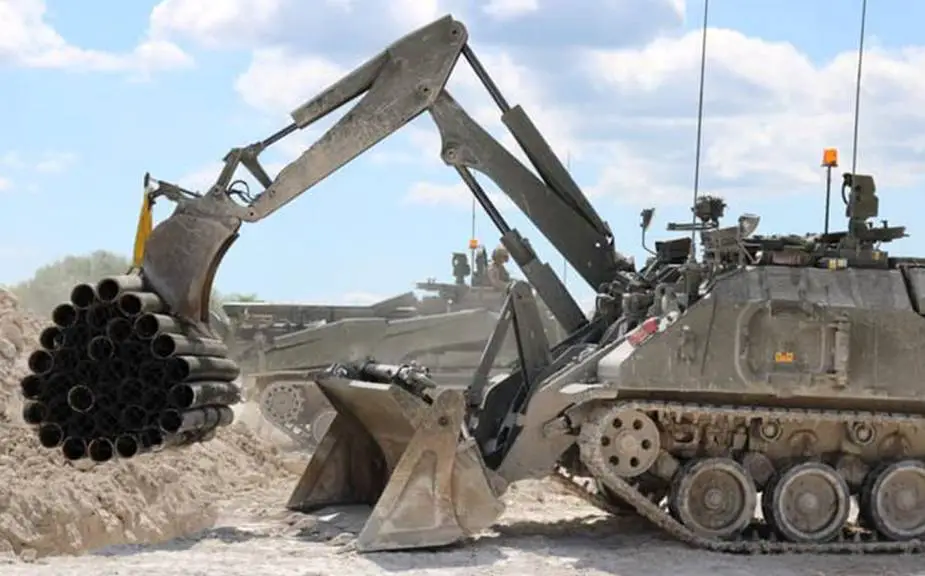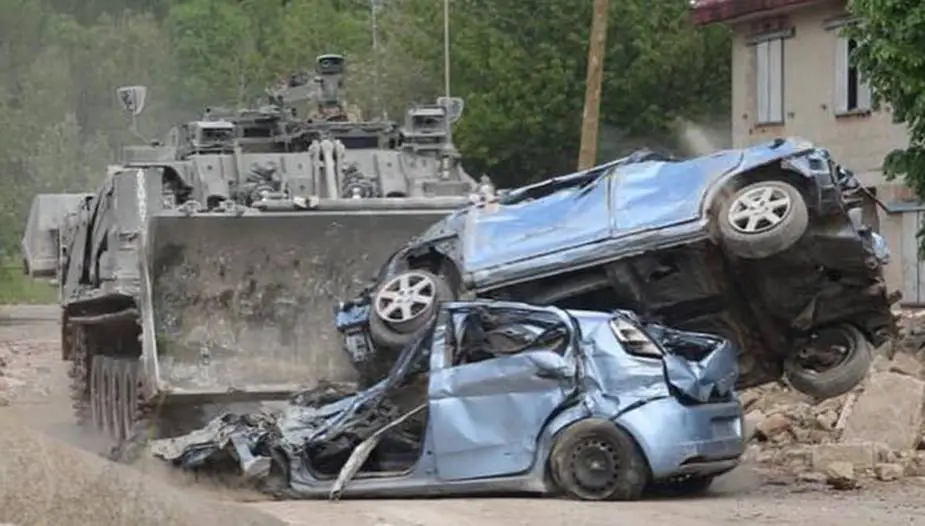Breaking news
British Army exercise Wessex Storm tests 32 Royal Engineers.
The readiness of the British Army's 32 Engineer Regiment to serve as part of the Army’s rapidly deployable Light Brigade is being put to the test on Exercise Wessex Storm.
Follow Army Recognition on Google News at this link

Terrier combat engineer vehicle at work (Picture source: British MoD)
As the British MoD reports on its website, the Regiment, together with 69 Gurkha Field Squadron, 36 Engineer Regiment, is giving a powerful demonstration of their engineering capabilities on the exercise in support of 7th Infantry Brigade, who are the Headquarters for the UK Joint Expeditionary Force (JEF) Light Force. These mainly involve mobility support, counter-mobility and survivability.
Mobility is supporting the Brigade’s ability to move across the ground and deliver firepower, troops, and supplies to any part of the battlefield. Counter-mobility is the effort to disrupt the enemy, building ditches, destroying bridges, or blowing up roads. Survivability is focused around protecting and sustaining the Brigade; building or upgrading defensive locations, such as Forward Operating Bases (FOBs), to protect soldiers; providing drinking water, by filtering and treating water from ponds, lakes, and rivers; and installing power systems to provide electricity to camps and bases.
The Sappers have been using their specialist skillsets day and night on Salisbury Plain to clear obstacles, build bridges and provide an explosive method of entry into buildings.
Troops from 2 Headquarters and Support Squadron, 32 Engineer Regiment, have been using the Automotive Bridge Launching Equipment (ABLE), building rapidly deployable General Support Bridges (GSB) across the River Avon to bring in troops and supplies to enable further operations to be conducted against the enemy.
The Royal Engineers have also been building field fortifications as well as a Medium Girder Bridge (MGB) to ensure friendly forces can keep moving and maintain mobility on the exercise.
The Regiment has been using the versatile 30-tonne light armoured general support engineer vehicle known as the Terrier for urban obstacle clearances. Capable of reaching speeds of almost 50 miles per hour it can be used for mine clearance, digging-in equipment and troops, route maintenance and general engineer tasks. It is equipped with a General-Purpose Machine Gun (GPMG) and smoke grenade launchers and can be controlled remotely to improve protection for the operators when conducting hazardous tasks.
Later in the exercise, they will be constructing defences and obstacles to slow enemy movement. They will continue to build bridges and clear routes to support the independent Battle Groups (BG) and reinforce the breaching of urban areas by the infantry.
Working in the background to ensure the vehicles stand up to the rigours of training are the vehicle mechanics from the Royal Electrical and Mechanical Engineers. The Exercise saw this team based out of its workshop to repair vehicles on the ground.
The Commanding Officer of 32 Engineer Regiment, Lieutenant Colonel Peter A Young RE said: “The Exercise is about confirming our skills and readiness to be ready to deploy at short notice on operations around the world. We will remain at readiness to support 7th Infantry Brigade as the Light Brigade in any operations that might arise in the future, ranging from warfighting to supporting civilian operations and humanitarian responses. In the meantime, we have a number of Squadron-level exercises to keep the soldiers’ skills up-to-date and we continue to send small groups of soldiers, as needed, to support the wider Corps of Royal Engineers in Short-Term Training teams, construction tasks, and responses to COVID-19 - as we have been so far this year.”
The Royal Engineers also has specialists from Counter-CBRN (Chemical, Biological, Radiological & Nuclear hazards), Counter-Explosive Ordnance and Military Working Dogs who are involved in the exercise which will end on the 24th of June.

Soldiers from 32 Engineer Regiment conduct urban clearance drills using the Terrier engineering vehicle. (Picture source: British MoD)



















